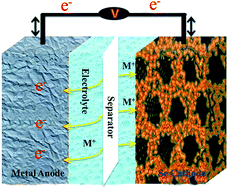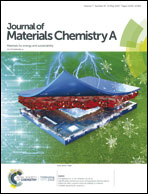Rechargeable metal batteries based on selenium cathodes: progress, challenges and perspectives
Abstract
Rechargeable metal batteries using selenium or selenide as the cathodes have attracted considerable attention during the past few years owing to selenium/selenide possessing a high volumetric energy density that is comparable to that of sulfur, a moderate output voltage and characteristics of environmental benignity. However, the applications of Se-based rechargeable metal batteries are hindered by the easy dissolution of polyselenides with severe instances of the shuttle phenomenon, poor cycle life and coulombic efficiency, low loading and low utilization of active materials, as well as the relatively high cost of selenium. To overcome these challenges, scientists have proposed various strategies, including optimizing electrode nanostructures, developing new electrolytes, and constructing novel battery structures. Herein, this review systematically introduces various nanostructured Se-based cathode materials, and new electrolytes and separators for Se-based rechargeable metal batteries, as well as investigating the electrochemistry of various Se-based rechargeable metal batteries and cell structure designs. We also present perspectives for future development in line with the preparation of high energy density, environmentally friendly and sustainable selenium-based energy storage systems.

- This article is part of the themed collection: Recent Review Articles


 Please wait while we load your content...
Please wait while we load your content...